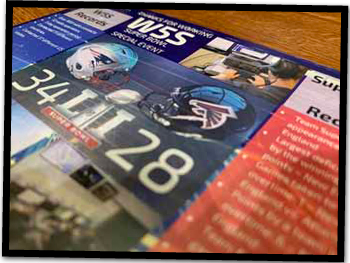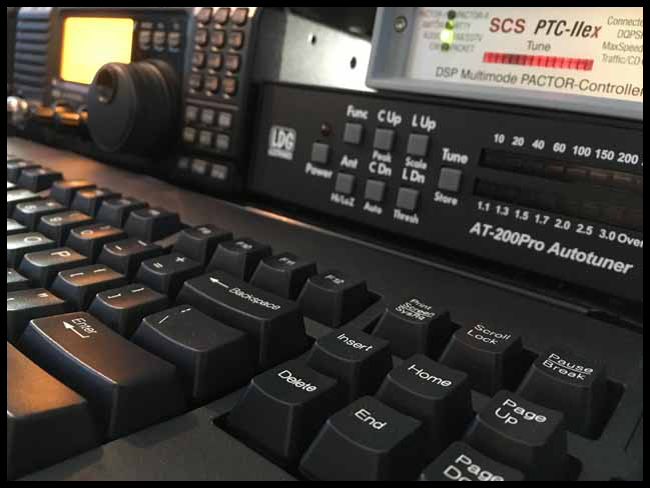Secrets of the Ham Radio Bands – Explained
I am often asked the question in the preparedness world “why all the hype about becoming an amateur radio operator?” Why should I devote the time? How will be benefit me in my planning for emergencies and disasters? Here we will take a look as some of the most common ham radio bands and how they can benefit you for emergency communications.
I have found that many times, us as amateur radio operators fail a marketing. We don’t always explain what amateur radio can do for you. Or sometimes, the explanation is just too technical. Let’s see if we can improve that today with a simplified explanation of the ham band and how they can be used. While we won’t have time to describe all the amateur frequency bands here, we will touch base on the predominant ones that will support you the best.
2 Meter and 70cm Bands
2 Meter Frequency Range: 144 MHz – 148 MHz
70 Centimeter Frequency Range: 420 MHz – 450 MHz
The 2-Meter and 70cm bands are where it’s at for short range amateur radio. They are some of the most affordable radios to purchase and can provide citywide and even statewide communications using repeaters.
While a handheld amateur radio can only reach out a few miles in normal conditions,
repeaters allow communications at much farther distances. There are over 21,000 documented amateur repeaters across the USA, Canada, and Mexico
(RepeaterBook.com). It is the largest, free to use, group of repeaters in the country.
These bands operate in FM (frequency modulation) and make it affordable as an entry ham. They also can allow a simple yet redundant method for family or team
communications across your town for all who have a license.
The 70cm band offers better building penetration than 2-meter and is considered more effective in urban areas. While the 2-meter band carries farther in rural areas and can offer skip or VHF propagation in certain weather conditions such as the passing of frontal boundaries or temperature inversions carrying your signal much farther. See the map here for the current VHF propagation conditions.
The 2-meter and 70-centimeter bands can be used with a Technician class license; the first license you receive when you start testing for ham radio.
6 Meter Band (50 – 54 MHz)
While the 6-meter band offers repeaters with a farther range, they are fewer and far between than their 2 meter and 70 cm counterparts. This band uses FM (frequency modulation) and is known for the ability for VHF skip allowing radio transmissions over 50-75 + mile distances, especially with single sideband operations (SSB) from a good base station.
It also offers sporadic national or even worldwide communications when atmospheric
conditions or solar conditions are right. While this can’t be depended upon for emergency communications, it is an adventure for DX’ers and contesters (hams wanting to talk to contacts worldwide) due to its rarity and sporadic nature.
Equipment is readily available, as it comes on many HF rigs, but is more expensive than getting into 2 meters or 70cm. The 6-meter bands can also be used with a Technician class license.
10 Meter (28MHz – 29.7 MHz)
The 10m ham radio band is just above the Citizens Band (CB) portion of the radio spectrum. This band is predominately operated with Amplitude Modulation (AM) similar to CB and is most capable in Single Sideband (SSB) mode. If you were using 4-5 watts (similar to CB), the same range of 1-5 miles in AM or 5-30 miles or more during the right time of day in SSB can be expected.
However, since you are a licensed ham, you can put out MUCH more power in 10 meters. While
CB is limited to 4 watts, 10 meters is included in most HF rigs with 100W output, and an amplifier can also be connected for the maximum legal output of 1500W. That said, 1500W is not for the newbie. There are a number of safety factors and increased cost associated with that level of power output.
10 meters is used by amateurs heavily for sporadic propagation caused by the solar cycle. During these cycles, 5-10 watts can reach half-way around the globe with a good antenna. However, just as with 6-meters, these ranges can’t be depended upon for emergency communications because of their rare and sporadic nature.
The 10-meter band is the only HF band which is currently allowed to be used by a Technical class license (the lowest class of ham license) for SSB voice and data. While it is allowed, only a portion of the band is allowed to be used at that license class. This is enough to provide a good system for areawide (or longer) simplex communications, especially in rural areas. To use the full band, a general class license or higher is required.
12 Meter and 15 Meter Bands
12 Meter Frequency Range: 24.89 MHz – 24.99 MHz
15 Meter Frequency Range: 21 MHz – 21.45 MHz
These bands are heavily influenced by the sunspot cycle. At the bottom of the
sunspot cycle they are only useful for short range communications. When at the peak of the sunspot cycle the bands are capable of communicating thousands of miles with low power. These bands require a General class amateur radio license or higher to legally operate.
20 Meters (14 MHz – 14.35 MHz)
This band is extremely popular by DX’ers (for worldwide communications). The band is
somewhat dependent on the sunspot cycle. When the cycle is active, long distance communications are possible throughout all times of the day. In the low portion of the cycle, the band is

capable of long distance communications and can be “open” during day or night.
I commonly make stateside contacts during the day regardless of the sunspot cycle without an optimal antenna setup. 20-meters allows for a more compact antenna set up than 40, 80, 160-meter bands. Because the wavelength is shorter, less room and height is required for an optimal antenna set up.
Ground wave simplex communications (meaning no propagation) on this band can offer ranges of 30-70 miles in AM SSB mode. These bands require a General class amateur radio license or higher to legally operate.
40 Meter Band (7 MHz – 7.3 MHz)
The 40-meter band is a favorite by many ham operators. During the summer daytimes, distances of 300-400 miles are possible with nighttime distance of 1000 miles are possible. During the winter, daytime communications offer 500 miles or more with nighttime bring international DX conditions in many cases. This is caused by the changes in the layers of the atmosphere between summer and winter.
This band is not as affected by the sunspot cycle as 6 – 20 meters and also requires a General class amateur radio license or higher to legally operate.
80 Meter and 160 Meter Bands
80 Meter Frequency Range: 3.5 MHz – 4.0 MHz
160 Meter Frequency Range: 1.8 MHz – 2.0 MHz
Both of these bands offer similar performance and are more local during the day and essentially “closed” to worldwide communications. At night, they open up extensively and state to state or even worldwide communications become possible.
The 160-Meter band borders the AM broadcast band you listen to in your car. 80-Meters is common for single or multi-state net operations and general conversations among ham operators known as “rag chewing”.
These bands can be prone to static and interference, especially during the summer and, due to their long wavelengths, require an EXTREMLY long antenna for optimal performance. Just to give you an idea, a ½ wave dipole antenna (a common standard of comparison for antenna performance) for 80 meters would be 124 feet long while the same for a 160-Meter antenna would be 256 feet long.
HF for Emergency Communications
Different bands of HF communications are great for different philosophies of use. Here are a few recommendations based on potential emergency use of HF.
Listening for Intel
All bands of HF radio are beneficial if you are predominately interested in monitoring for information on disasters, news, or current conditions elsewhere in the country or world. Since many bands of HF are dependent on atmospheric conditions, the communication you receive from one part of the world may not be possible a few hours or even a few minutes later.
Since you are listening for intel, this “randomness” (it is not all random, but that is too much RF theory to discuss this article) is not an issue. It is actually beneficial, as you can receive information from different parts of the world. Conversations from other hams can provide useful intel as to what is going on in a specific area. Additionally, from the same radio, you can listen to shortwave radio, and AM radio.
Many disasters have had HF communication nets brought online to communications when other communication lines were completely down. The Haiti Earthquake in 2010, the Nepal Earthquake in 2015, and Hurricane Irma in 2017 to name a few. HF continues to provide vital communication lifelines with other systems fail.
Local Long-Range Communications Using NVIS
Near Vertical Incident Skywave, or NVIS for short, is the use of HF radio with a specific antenna setup to allow for a single bounce off the ionosphere to allow for radio overage over an area from 30-400 miles wide.
While we could write an entire article on NVIS, this radio communications method in amateur radio typically uses 40 meters (day) and 80 meters (night) and can provide solid communications for teams or family in nearby states or neighboring cities.
In a perfect world, a radio station in Austin, Texas for example, this could cover almost the entire state of Texas. From Colorado, multiple states could be covered. That said, a 50-150-mile range with NVIS is common and quite reliable with AM SSB voice communications.
An NVIS antenna setup does not take up a great amount of real estate, and can run at lower heights as opposed to that for optimal worldwide communications. While it does require a General Class license (due to the use of the 40 and 80-meter bands) for voice, it could be used for Morse Code operations by Technician class operators.
Wrapping It Up
As you can see the amateur radio bands provide a great range of capability from short distance to around the world communications to support your preparedness needs.
If you are interested in getting your ham radio license, I recommend to read a little more in depth on the benefits of simplex and repeater communications in this article, as this is will be your springboard after you obtain your license.
Also download our free Amateur Radio Quick Reference and Resource Guide to serve as a reference through your training and test preparation process. See you on the air!






Nice job. As a beginner, I have been confused about the utility of each band. This makes it very clear and may encourage me to buy a multi band , higher power transceiver.